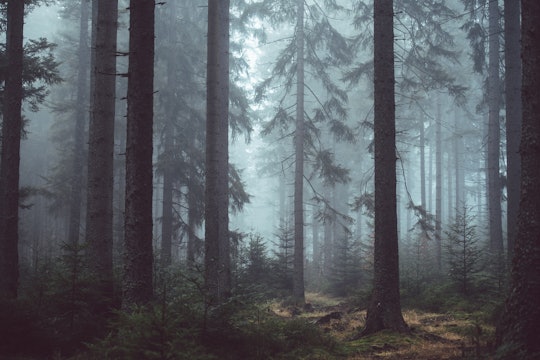
We can no longer count on nature's 'self-correction' to curb warming
Plants are reaching their carbon-storage limit
For a long time, Earth had a lot of carbon in storage. This underground carbon, pulled by long-dead plants from the atmosphere, was concentrated first into the tissues of plants and their consumers and further by pressure, heat, and time, forming a rich source of energy that persisted long after their deaths.
Humans built our economies around these highly concentrated fossil fuels, liberating stored carbon back into the atmosphere as carbon dioxide. As the consequences of that liberated carbon are manifesting in Earth’s climate, carbon dioxide occupies a complicated middle ground between friend and foe: it's a greenhouse gas that allows the atmosphere to store more energy, warming the planet. But it is also an essential ingredient for photosynthesis, the foundation of Earth's energy economy. So, by enriching the atmosphere with carbon dioxide, humans didn't just insulate the planet, we also fertilized it. By 1997, researchers had documented a marked "greening" of the earth from the early 1980s onward.
That has continued to the present day – Peking University climate scientist Zaichun Zhu and his coauthors used satellite imagery to show in a 2016 Nature Climate Change paper that, between 1982 and 2009, a quarter to half of Earth's vegetated land was greening, compared to less than 4 percent that was browning. Most of this greening, they found, corresponded to there being more carbon dioxide in the atmosphere. A greener Earth is a sign that plants may be packing back up some of the extra carbon dioxide liberated by humans.
In fact, since 1960, land plants have pulled an average of about one third of this extra carbon dioxide. With the help of the ocean, this number jumps to nearly two thirds. (Like ecosystems on land, the ocean is teeming with photosynthesizers that can use carbon dioxide like land plants do, and ocean water can hold dissolved carbon dioxide as well.)
CO2: friend and foe
By packing up carbon dioxide faster, plants and other photosynthesizers have helped to balance out extra carbon dioxide emitted by human activities. But ecologist Josep Peñuelas and others posit in a recent Nature Communications paper that Earth's natural carbon dioxide emissions buffer may be reaching its limit.
The amount of carbon ecosystems can store is controlled by the balance between the amount of carbon dioxide plants can take up and the amount that is lost back into the atmosphere as organisms exhale carbon dioxide after "burning" carbon-based energy. The balance of uptake and release determines whether an ecosystem is storing or releasing carbon overall. If an ecosystem is taking up more than it is releasing over the course of a year, it is storing carbon, but if it is releasing more than it is taking up then it a source of carbon.
With excess carbon dioxide, fertilization allows plants to take up more carbon each year. But the margins of these increases are growing ever slimmer without extra amounts of all of the other things plants need to grow, like nutrients and water. After all, at a certain point, it doesn't matter how much of one necessity is available if there isn't enough of all of the others. Plants are closing in on that point.
To understand how scientists like Peñuelas know this, we have to watch the planet breathe carbon dioxide, with plants inhaling it and living things releasing it. Because there is more land and therefore more land plants in the northern hemisphere, growing seasons there drive how much carbon dioxide is in the atmosphere over the course of a year. During the growing season, plants take up so much carbon dioxide that its concentration in the atmosphere dips, but the end of the growing season brings a comparable increase as photosynthesis slows, deciduous trees lose their leaves, and living things continue to exhale carbon dioxide. These inhalations have deepened with the greening of the earth, as plants take up more carbon dioxide, but this deepening is beginning to slow.
At the limit
As plants reach their limit to take up more carbon dioxide, other variables will run the carbon storage show: carbon dioxide will likely affect the planet going forward mostly by warming it rather than by greening it, which is tricky because the effects of warming are less straightforward than those of fertilization.
Longer growing seasons caused by warming can increase carbon uptake while warming-induced drought can significantly curtail it. Intense fires can liberate huge amounts of carbon dioxide from trees very quickly, which take much longer to build back up. While much of the research on how carbon is stored in ecosystems has focused on figuring out how much fertilization-driven buffering we can count on moving forward, the effects of warming on carbon storage may be the new frontier for research.
As scientists seek to answer these questions, it is becoming increasingly clear that we can no longer count on ecological "self-correction" to save the day. Peñuelas and his co-authors highlight the importance of making (and sticking to) policies that reduce greenhouse gas emissions and limit temperature increases, while at the same time suggesting more research on the effects of warming.
They also mark this shift as a turning point, not just for carbon storage, but for the intensification of the effects of climate change. All of this underscores what decades of climate research indicates: we must reduce greenhouse gas emissions and promote carbon storage so that we don't have to learn about warming's unpredictable and destructive effects firsthand.




I have read that seaweed farming might be a last resource for removing CO2 from water, and thus reversing local acidification of seas, if not actually storing carbon for the long term. What do you think of using seaweed farming for CO2 absorption?